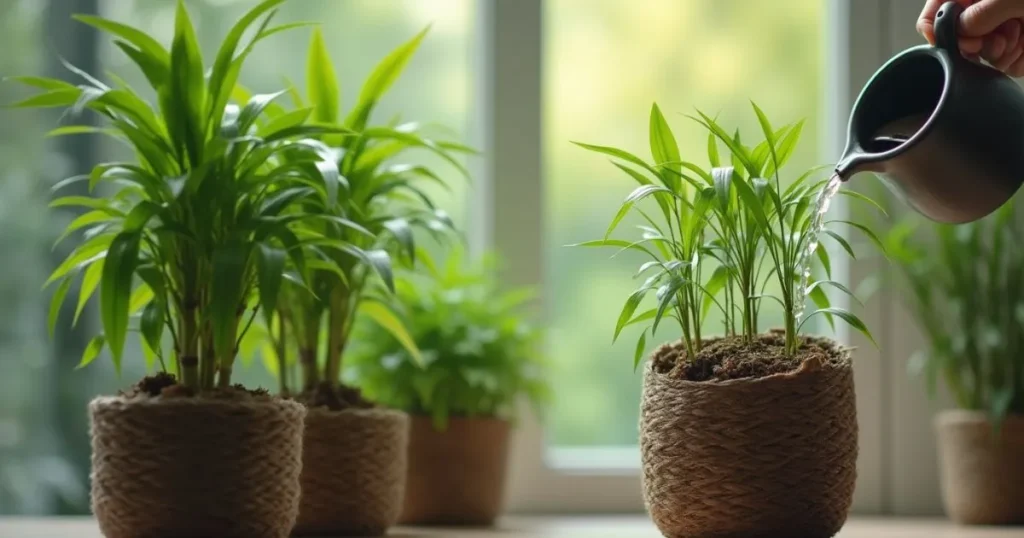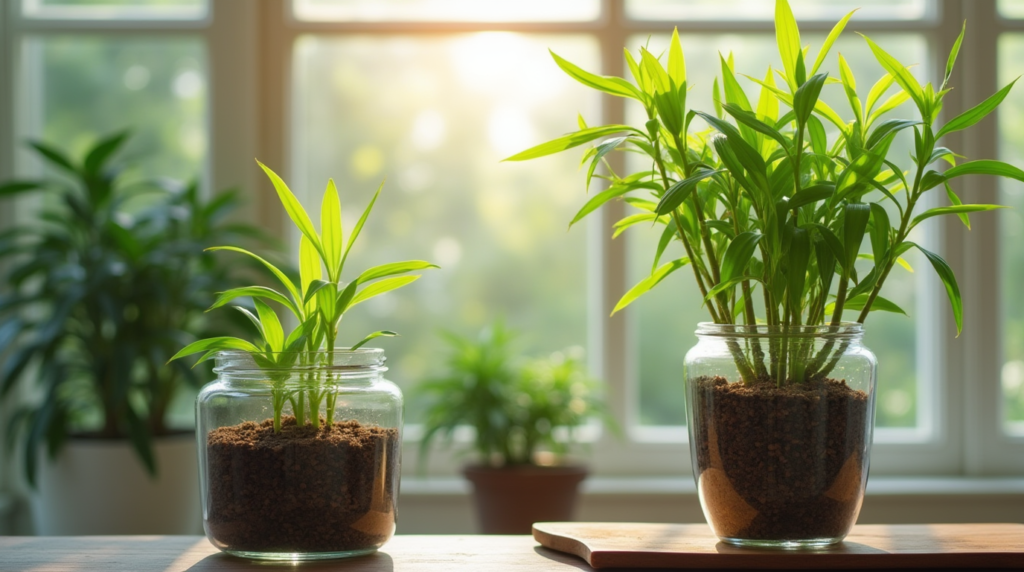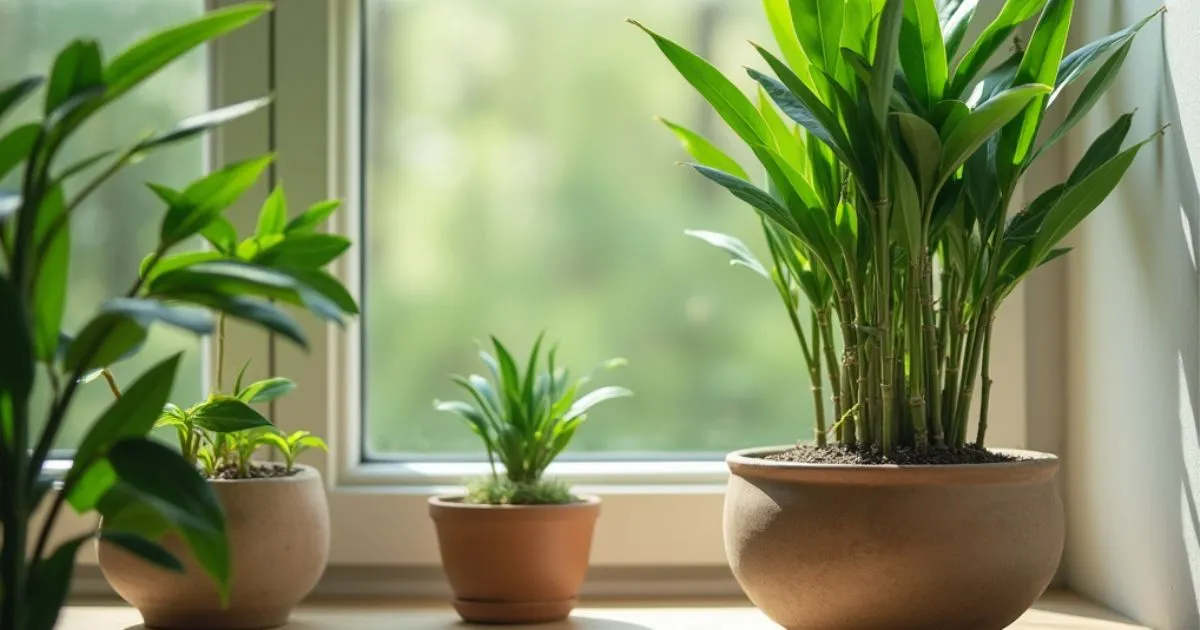Imagine walking into your home after a hectic day, craving peace. What greets you first is a lush, vibrant bamboo plant, standing like a sentinel of tranquility in your space. Indoor bamboo plants, with their elegant stalks and soft green leaves, do more than just add beauty to a room; they create a mini oasis, a spot where nature effortlessly mingles with modern life. Not only are they low-maintenance and resilient, but they’re also symbols of harmony, resilience, and good fortune in many cultures.
Caring for an indoor bamboo plant may seem simple, and in many ways, it is. However, understanding the nuances of watering, lighting, and general upkeep can make all the difference in nurturing a healthy, thriving plant. This article covers all aspects of indoor bamboo plant care, from how much light and water they need to troubleshooting common problems. By the end, you’ll feel equipped to give your bamboo the perfect indoor environment to thrive.
Table of Contents
Why Choose Bamboo as an Indoor Plant?
Bamboo has a unique charm that resonates with a lot of plant enthusiasts, and for good reasons. Indoor bamboo plants not only bring the beauty of nature indoors but are also known to improve indoor air quality by filtering out toxins. Let’s explore why bamboo is such an ideal choice for indoor settings.
- Natural Air Purifier: Bamboo plants help purify the air by absorbing toxins like formaldehyde, benzene, and carbon monoxide. They’re natural air purifiers, making them especially beneficial for urban settings where air quality can be compromised.
- Low-Maintenance Elegance: Unlike some indoor plants that require constant attention, bamboo is hardy and resilient. It grows well in a variety of conditions, so even if you’re new to plant care, you’ll find bamboo to be forgiving.
- Symbolic Significance: Bamboo is often associated with good luck, resilience, and harmony. Having it indoors can bring a sense of calm and balance, making it more than just a decorative piece.
Understanding Indoor Bamboo Varieties and Basic Care Needs
Bamboo might seem straightforward, but there are several indoor varieties, each with unique characteristics and care needs. Choosing the right variety for your space and understanding its specific requirements will help ensure your bamboo stays healthy and vibrant.
Popular Indoor Bamboo Types

Let’s look at some of the most popular types of bamboo for indoor settings:
- Lucky Bamboo (Dracaena sanderiana)
- Lucky Bamboo is technically not a bamboo but shares a similar appearance. Known for its unique spiral stems, it’s often considered a symbol of good fortune and positivity.
- Bamboo Palm (Chamaedorea seifrizii)
- This variety brings a tropical touch with its palm-like appearance. It’s ideal for larger spaces and makes a statement with its lush, green leaves.
- Fountain Bamboo (Fargesia nitida)
- This variety is perfect for small spaces. Known for its graceful, arching leaves, Fountain Bamboo brings an elegant touch to any room without taking up too much space.
- Dwarf Bamboo (Pleioblastus distichus)
- Dwarf Bamboo is compact, with dense foliage that’s ideal for filling in smaller spaces. It’s perfect for tabletops, shelves, or windowsills.
Quick Comparison Table of Bamboo Varieties
| Bamboo Type | Light Requirement | Water Needs | Growth Medium | Size/Height |
| Lucky Bamboo | Low/Indirect | Water | Water or soil | Small |
| Bamboo Palm | Low/Medium | Soil, moderate | Soil | Medium to large |
| Fountain Bamboo | Low/Indirect | Moist soil | Soil | Small to medium |
| Dwarf Bamboo | Low/Partial light | Moist soil | Soil | Small |
Each of these varieties has its own strengths and aesthetic appeal, so consider the light, space, and style of your home when choosing.
Indoor Bamboo Plant Watering Tips
Watering is one of the most crucial aspects of bamboo plant care, and each variety has its specific needs.

General Watering Guidelines for Indoor Bamboo
Whether in soil or water, indoor bamboo needs consistent moisture to stay healthy. Here are some general guidelines:
- Signs of Overwatering or Underwatering
- Overwatering: If the leaves start to yellow, it’s a sign of too much water.
- Underwatering: Dry, crispy leaves indicate a lack of moisture.
- Frequency
- Watering needs vary depending on the growth medium, so let’s explore the specifics for both water-based and soil-based bamboo.
Watering Bamboo in Soil vs. Water
- Soil-based Bamboo
- If your bamboo is planted in soil, water it once the top inch of soil feels dry. Bamboo roots do not tolerate standing water, so make sure the pot has drainage holes to prevent waterlogging.
- Water-based Bamboo (e.g., Lucky Bamboo)
- Lucky Bamboo is often grown in water, which makes it a low-maintenance option. However, to prevent algae and bacteria buildup, change the water weekly. Ensure the water level is just above the roots, and use filtered or distilled water if possible, as chemicals in tap water can harm the plant.
Seasonal Watering Adjustments
Bamboo’s water needs can change with the seasons:
- Summer: In warmer months, the plant may require more frequent watering due to increased evaporation.
- Winter: During the cooler months, growth slows down, so water less frequently, only when needed.
Light Requirements for Indoor Bamboo
Indoor bamboo is adaptable, but understanding its light requirements will help it thrive. Most bamboo varieties prefer low to medium indirect light, making them perfect for indoor environments.
Ideal Light Conditions for Indoor Bamboo Plants
Here are some general tips for lighting:
- Indirect, Low to Medium Light
- Bamboo is sensitive to direct sunlight, which can scorch the leaves. Placing your bamboo near a north-facing window or away from direct sunlight will help it flourish.
- Avoid Direct Sunlight
- Direct sun exposure can lead to leaf scorch, which appears as brown spots or edges on the leaves.
Adapting Bamboo to Low-Light Environments
Bamboo is one of the few plants that can adapt well to low light. If you have a room with little natural light, consider supplementing with artificial lighting:
- Artificial Lighting Solutions
- Low-energy LED grow lights are a great alternative if natural light is limited. Keep the lights on for 10–12 hours daily to simulate natural light cycles.
Signs Your Bamboo Needs More or Less Light
- Too Much Light: Leaves might appear bleached or have brown tips.
- Too Little Light: Slowed growth and pale leaves are signs that your plant needs more light.
Essential Maintenance Tips for Healthy Indoor Bamboo

Aside from watering and lighting, bamboo requires regular upkeep to maintain its health and appearance. Here’s how to keep your plant thriving:
Pruning and Shaping Bamboo Plants
Regular pruning not only helps keep your bamboo manageable but also encourages new growth.
- Regular Pruning
- Trim yellow or dead leaves to redirect energy to healthy parts of the plant.
- If your bamboo is outgrowing its space, use clean scissors to trim back overgrown stalks.
- Shaping
- For varieties like Lucky Bamboo, you can create spiral shapes by rotating the plant or using training wires to guide its growth.
Fertilizing Indoor Bamboo
While bamboo is relatively low-maintenance, occasional fertilizing can help it stay vibrant.
- Fertilizer Requirements
- Use a diluted, balanced fertilizer every 2–3 months, especially during the growing season (spring and summer). Over-fertilizing can damage the roots, so less is more.
Repotting Bamboo
As your bamboo grows, it may outgrow its container. Here’s how to repot it successfully:
- When to Repot
- Repot every 1–2 years, or whenever the plant’s roots are visibly outgrowing the pot.
- Choosing the Right Pot
- Use a pot that’s 1–2 inches larger than the current pot and make sure it has drainage holes. Adding a layer of small stones at the bottom can also improve drainage.
Common Issues and How to Troubleshoot Indoor Bamboo Problems
Bamboo plants are generally hardy, but they can sometimes face issues. Here’s how to identify and address common problems:
Yellowing Leaves
Yellowing leaves are often a sign of overwatering or poor water quality. Here’s what to do:
- Causes
- Overwatering, exposure to harsh chemicals in tap water, or excessive sunlight.
- Solution
- If using tap water, let it sit overnight to allow chemicals to evaporate, or use distilled water. Check the soil moisture and adjust watering frequency as needed.
Pest Prevention and Treatment
Indoor bamboo can attract pests like aphids and spider mites. Regular cleaning and inspection are essential to keep pests at bay.
- Common Pests
- Aphids, spider mites, and mealybugs are the most common pests that affect indoor bamboo.
- Treatment Tips
- Wipe the leaves with a damp cloth every few weeks and apply insecticidal soap if pests appear. Neem oil spray is also effective for pest control.
Root Rot Prevention
Root rot is one of the few serious issues that can affect indoor bamboo. It’s usually caused by overwatering or poor drainage.
- Causes
- Standing water in the soil or container can lead to root rot.
- Solution
- Ensure that pots have proper drainage and water only when the top inch of soil is dry.
Best Spots to Place Indoor Bamboo for Optimal Growth
Where you place your bamboo can impact its health and aesthetics. Here are some suggestions for the best locations:
Ideal Locations for Indoor Bamboo Plants
- Living Room: A shaded corner near a window allows bamboo to receive gentle indirect light, ideal for its growth.
- Bathroom: The humidity in bathrooms is perfect for bamboo varieties like Lucky Bamboo.
- Office/Workspace: Bamboo can thrive in low-light areas, adding a calming, green presence to any workspace.
Feng Shui Tips for Bamboo Placement
According to Feng Shui, bamboo placement can impact energy flow in your home.
- Lucky Bamboo Placement
- Placing Lucky Bamboo near the entrance invites positive energy. Positioning it in the southeast corner of a room is said to bring prosperity.
Frequently Asked Questions (FAQs) about Indoor Bamboo Plant Care
How often should I water my indoor bamboo plant?
- Soil-based bamboo needs watering when the top inch of soil dries. For water-based bamboo, change the water weekly.
Can indoor bamboo survive in low light?
- Yes, most indoor bamboo varieties thrive in low or indirect light conditions.
Do I need to fertilize my indoor bamboo?
- Minimal fertilizing is needed; apply a diluted, balanced fertilizer every 2–3 months during spring and summer.
Why are my bamboo leaves turning yellow?
- Yellowing may indicate overwatering, chemical exposure in tap water, or excessive sunlight.
What type of pot is best for bamboo?
- Use a pot with drainage holes to prevent waterlogging, and consider one that’s slightly larger than the plant’s root ball.
Conclusion
Indoor bamboo plants bring a touch of green elegance and create a calming oasis in your home. By understanding their watering, lighting, and maintenance needs, you can keep your bamboo healthy and vibrant. Whether you’re drawn to the symbolic Lucky Bamboo or the tropical Bamboo Palm, these plants are a joy to care for and a beautiful addition to any indoor space.
Are you ready to transform your home into a serene oasis? With this guide, you have everything you need to nurture your indoor bamboo and enjoy its lasting beauty. Start your bamboo journey today and experience the peace it brings into your home!

